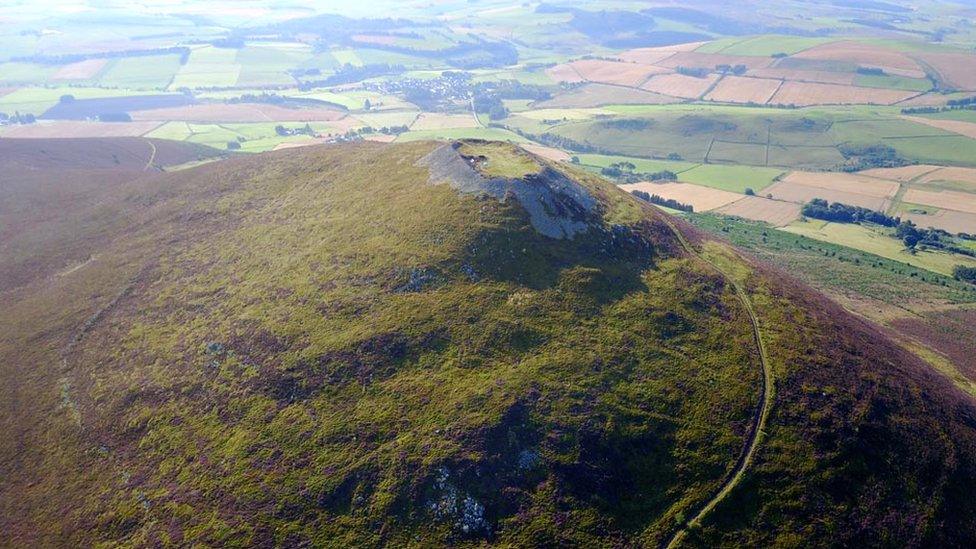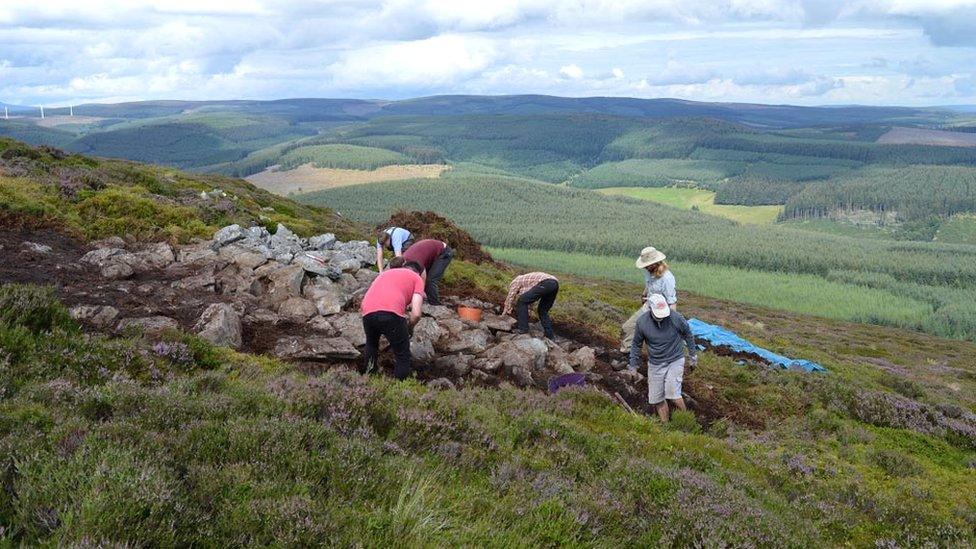Ancient Tap O' Noth hillfort in Aberdeenshire one of 'largest ever'
- Published

Tap O' Noth overlooks Rhynie
A hillfort in Aberdeenshire is one of the largest ancient settlements ever discovered in Scotland, researchers have said.
University of Aberdeen archaeologists say 4,000 people may have lived in more than 800 huts perched high on the Tap O' Noth near Rhynie.
Many had thought it dated from the Bronze or Iron Age.
The team said carbon dating suggested it was likely to be Pictish, dating back as far as the third century AD.
They believe at its height it may have rivalled the largest known post-Roman settlements in Europe.
Archaeologists from the university have conducted extensive fieldwork in the surrounding area since 2011.
Prof Gordon Noble, who led the research, described the discovery that activity at the site extended into the Pictish period as the most surprising of his career.

The research uncovered evidence which "stunned" the team
"I was absolutely stunned when I read the results," he said.
'Truly mind-blowing'
"We took samples from the site really just to begin placing the important discoveries we have made at Rhynie over the last few years in a broader geographical context. The results of the dating were simply incredible.
"The Tap O' Noth discovery shakes the narrative of this whole time period. If each of the huts we identified had four or five people living in them then that means there was a population of upwards of 4,000 people living on the hill.
"It is truly mind-blowing and demonstrates just how much we still have to learn about settlement around the time that the early kingdoms of Pictland were being consolidated."
Aberdeenshire Council leader Jim Gifford said: "This find of historic importance will be of huge significance.
"I am hopeful that once restrictions start to be lifted, and of course when it is safe to do so, visitors from far and wide will flock to Aberdeenshire to explore this find."
- Published18 June 2019
